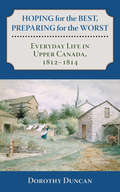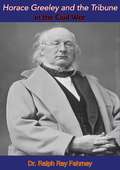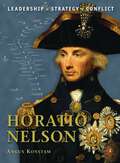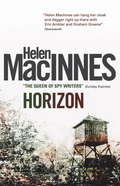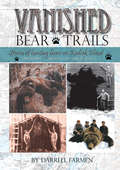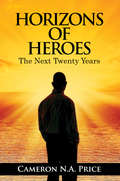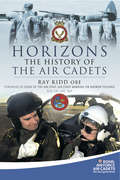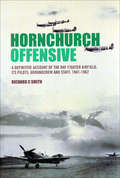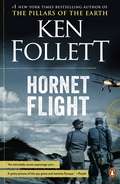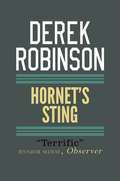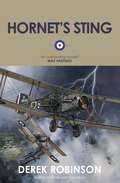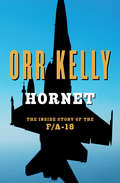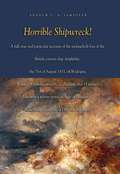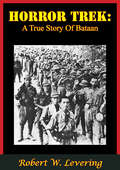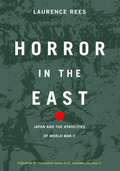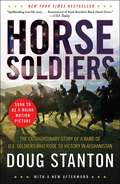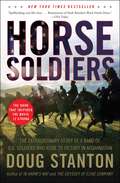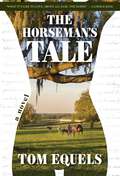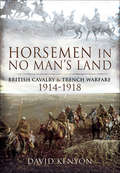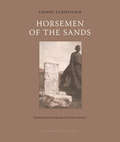- Table View
- List View
Hoping for the Best, Preparing for the Worst: Everyday Life in Upper Canada, 1812–1814
by Dorothy DuncanAn examination of Upper Canadian life at the dawn of a modern nation. Hoping for the Best, Preparing for the Worst explores the web of human relationships that developed in Upper Canada following the American Revolution, in the years leading up to the War of 1812, and during the conflict that raged for two years between the young United States and Britain, its former master. The book focuses on the families, homes, gardens, farms, roads, villages, towns, shops, and fabric of everyday life in this frontier society.Upper Canada was a land in transition as First Nations, fur traders, Loyalists, entrepreneurs, merchants, farmers, and newcomers from every walk of life formed alliances and partnerships based on friendship, marriage, respect, religion, proximity, and the desire to survive and prosper. With the declaration of war in June 1812, Upper Canadians realized that not only their lives but their future peace and prosperity were threatened. They responded with perseverance, loyalty, and unexpected acts of bravery.
Horace Greeley and the Tribune in the Civil War
by Dr Ralph Ray FahrneyHorace Greeley (1811-1872) was an American author and statesman who was the founder and editor of the New York Tribune, among the great newspapers of its time. Born to a poor family in Amherst, New Hampshire, he was apprenticed to a printer in Vermont and went to New York City in 1831 to seek his fortune. In 1941 he founded the Tribune, which became the highest-circulating newspaper in the country through weekly editions sent by mail. Among many other issues, he urged the settlement of the American West, which he saw as a land of opportunity for the young and the unemployed, popularizing the slogan “Go West, young man, and grow up with the country.” He endlessly promoted utopian reforms such as socialism, vegetarianism, agrarianism, feminism, and temperance, while hiring the best talent he could find.In Horace Greeley and the Tribune, which was first published in 1936, Dr. Fahrney represents thorough research not only in the field of the New York Tribune, but in a great mass of printed material on the war. Well outlined and well written, it should prove both useful to the historian—offering the best guide through the mazes of the shuttlecock, loop-the-loop policy followed by the emotional editor of the Tribune—as well as to the student of journalism, who will find in it an explanation of how the most influential journal of the land in 1861 became one of the most distrusted four years later.
Horatio Nelson
by Peter Dennis Angus KonstamThe most famous admiral in history, Horatio Nelson's string of naval victories helped secure Britain's place as the world's dominant maritime power, a position she held for more than a century after Nelson's death. A young officer during the American Revolution, Nelson rose to prominence during Britain's war with Revolutionary France, becoming a hero at the battle of Cape St. Vincent. He went on to win massive victories at the Nile and Copenhagen, before leading the British to their historic victory at Trafalgar in 1805. But, in that moment of his greatest glory, Nelson was struck down by a French sharpshooter. Today Nelson is revered as an almost mythical figure - a naval genius and a national hero. He was also a deeply flawed individual whose vanity, ego and private life all threatened to overshadow his immense abilities. This book reveals the real Nelson.From the Trade Paperback edition.
Horizon
by Helen MacinnesBritish soldier Peter Lennox, a POW in an Italian prison camp, is still fighting his own war. An artist in civilian life, his hands bear the scars of wounds received during his capture at the fall of Tobruk, and he suspects he will never paint again. The only thing that sustains him is plotting his escapes, no matter how many times he is recaptured. But in September 1943 the Italians surrender to the Allies, and Lennox is free. Wanting nothing more than to return to the fighting, he is instead assigned to the mountains of the South Tyrol as a liaison to a desperate band of resistance fighters.With little more than courage and knowledge of the local terrain, Lennox and his comrades must help pave the way for an Allied push that may change the course of the war.
Horizons of Heroes 2: The Next Twenty Years
by Cameron PriceAfter returning from the Vietnam War, Cameron finds the United States has changed in ways he could not have imagined. He struggles to find his path through challenges in relationships, school, and employment. As an African American in the early 1970s, Cameron learns he must persevere a great deal more than the average person in order to achieve his goals and dreams. As one of the former highest ranking spies in the military, Cameron dares to share his view on how women know if it is “real love.” Horizons of Heroes: The Next Twenty Years is an amazing non-fiction book and an excellent read.
Horizons of Heroes: The Next Twenty Years
by Cameron PriceAfter returning from the Vietnam War, Cameron finds the United States has changed in ways he could not have imagined. He struggles to find his path through challenges in relationships, school, and employment. As an African American in the early 1970s, Cameron learns he must persevere a great deal more than the average person in order to achieve his goals and dreams. As one of the former highest ranking spies in the military, Cameron dares to share his view on how women know if it is “real love.” Horizons of Heroes: The Next Twenty Years is an amazing non-fiction book and an excellent read.
Horizons: The History of the Air Cadets (Royal Airforce Air Cadets:The Next Generation)
by H. R. KiddAlthough the first air cadet unit was raised in Bournmouth in 1928, the first squadrons to be formed in a privately funded national organisation were part of the Air Defence Cadet Corps in 1938. Thousands of youngsters joined and were able to learn about aircraft, aerodynamics, navigation, mechanics and other subjects not taught in schools. The organization was to become known as The Air Training Corps (ATC) and as war loomed it was considered a useful RAF recruitment tool to attract potential airmen and ground crew. Throughout the war ATC cadets supported the home defences by fire watching, as messengers and as observers, working alongside the Home Guard, the fire services and other vital organisations. During the second half of the 1900s the corps continued to thrive. Girls were now included and retired RAF officers and other ranks continued to take an active part in each squadron. There are now over 900 squadrons within the UK, providing the same skills to modern youth and teaching them the importance of personal responsibility and teamwork via annual camps at RAF stations, adventure training and flight experience. This book looks at all aspects of the Air Cadet's history and tradition, including the RAF sections of the Combined Cadet Force attached to public and grammar schools. It concludes with an analysis of what subjects and courses are currently available with many past and present illustrations.As seen in The York Press and The Scarborough News.
Hormiga de Fuego: La Armada de la Humanidad: Escuadrón Avispa Premio
by Jonathan P. BrazeeFloribeth Salinas O’Shae Dalisay es una Trabajadora Fuera del Planeta, empleada como piloto de exploración por la gigante corporación Hamdani Brothers. Enviada a una misión de rutina para analizar uno de los millones de sistemas en la galaxia, se encuentra con algo que podría amenazar la existencia de la humanidad. Ella apenas se escapa con su vida, pero en el proceso, tiene que cerrar la IA de su explorador. Al igual que con todos los OPW, ella tiene pocos derechos, y en lugar de ser alabada como una heroína, la corporación piensa que está mintiendo. Sus gerentes creen que encontró algo valioso y cerró su IA en un intento de ocultar ese hecho, esperando poder vender esa información al mejor postor. Aterrizada, y con una gran deuda ahora sobre su cabeza, Beth tiene que convencer a los poderes de que un peligro muy real para la humanidad está en espera en el espacio profundo.
Hornblower and the Atropos (The Hornblower Saga, Book #8)
by C. S. ForesterAdmiral Nelson is dead. The war with Bonaparte continues and there's a lot of gold to be salvaged. Follows Hornblower and the Hotspur.
Hornblower and the Crisis (The Hornblower Saga, Book #11)
by C. S. ForesterAlthough this story is incomplete, the outcome is clearly indicated. Also included are 2 short stories of Hornblower's other exploits, Hornblower and the Widow McCool, and The Last Encounter.
Hornblower and the Hotspur (The Hornblower Saga, Book #10)
by C. S. ForesterApril 1803. The Peace of Amiens is breaking down. Napoleon is building ships and amassing an army just across the Channel. Horatio Hornblower -- who, at age twenty-seven, has already distinguished himself as one of the most daring and resourceful officers in the Royal Navy -- commands the three-masted Hotspur on a dangerous reconnaissance mission that evolves, as war breaks out, into a series of spectacular confrontations. All the while, the introspective young commander struggles to understand his new bride and mother-in-law, his officers and crew, and his own "accursed unhappy temperament" -- matters that trouble him more, perhaps, than any of Bonaparte's cannonballs.
Hornchurch Offensive: A Definitive Account of the RAF Fighter Airfield, Its Pilots, Groundcrew and Staff, 1941–1962
by Richard C. SmithThe author of Hornchurch Scramble continues the fascinating study of the RAF airfield and its pilots after the Battle of Britain in World War II. Volume Two of this account begins when Hornchurch was at the forefront in taking the fight to the enemy, being heavily involved in the Sweeps and Circuses of 1941. Next came the Dieppe raid in 1942 by which time Hornchurch was truly international with Czechs, Belgians, French and New Zealanders all flying from there. Action was continuous and famous characters abounded, people like Harry Broadhurst and Paddy Finucane, and as with the first book, the author is particularly adept at expressing their views, experiences and recollections. Other events during the war where the base was predominant include the audacious German Channel Dash, Operation &“Starkey&” with the Americans, forming Mobile Radar Units for D-Day, and countering the V-1 menace. Post-war it served as an Air Crew Selection Center, from 1948-1956, and thousands of people passed through, some famous like Max Bygraves and Norman Tebbit, who tell their stories. With numerous photographs from private collections, this second volume maintains the excellence of the first to give the complete history through the eyes of those who were there.
Hornet Flight (Core Ser.)
by Ken FollettKen Follett and the intrigue of World War II—"a winning formula" (Entertainment Weekly) if ever there was one. With his riveting prose and unerring instinct for suspense, the #1 New York Times bestselling author takes to the skies over Europe during the early days of the war in a most extraordinary novel. . . . It is June 1941, and the war is not going well for England. Somehow, the Germans are anticipating the RAF's flight paths and shooting down British bombers with impunity. Meanwhile, across the North Sea, eighteen-year-old Harald Olufsen takes a shortcut on the German-occupied Danish island of Sande and discovers an astonishing sight. He doesn't know what it is, but he knows he must tell someone. And when he learns the truth, it will fall upon him to deliver word to England—except that he has no way to get there. He has only an old derelict Hornet Moth biplane rusting away in a ruined church—a plane so decrepit that it is unlikely to ever get off the ground . . . even if Harald knew how to fly it.
Hornet's Sting
by Derek RobinsonIt's 1917, and Captain Stanley Woolley joins an R.F.C. squadron whose pilots are starting to fear the worst: their war over the Western Front may go on for years. A pilot's life is usually short, so while it lasts it is celebrated strenuously.Distractions from the brutality of the air war include British nurses; eccentric Russian pilots; bureaucratic battles over the plum-jam ration; rat-hunting with Very pistols; and the C.O.'s patent, potent cocktail, known as "Hornet's Sting."But as the summer offensives boil up, none of these can offer any lasting comfort.
Hornet's Sting
by Derek RobinsonIt's 1917, and Captain Stanley Woolley joins an R.F.C. squadron whose pilots are starting to fear the worst: their war over the Western Front may go on for years. A pilot's life is usually short, so while it lasts it is celebrated strenuously. Distractions from the brutality of the air war include British nurses; eccentric Russian pilots; bureaucratic battles over the plum-jam ration; rat-hunting with Very pistols; and the C.O.'s patent, potent cocktail, known as 'Hornet's Sting'. But as the summer offensives boil up, none of these can offer any lasting comfort.
Hornet's Sting
by Derek RobinsonIt's 1917, and Captain Stanley Woolley joins an R.F.C. squadron whose pilots are starting to fear the worst: their war over the Western Front may go on for years. A pilot's life is usually short, so while it lasts it is celebrated strenuously. Distractions from the brutality of the air war include British nurses; eccentric Russian pilots; bureaucratic battles over the plum-jam ration; rat-hunting with Very pistols; and the C.O.'s patent, potent cocktail, known as 'Hornet's Sting'. But as the summer offensives boil up, none of these can offer any lasting comfort.
Hornet: The Inside Story of the F/A-18
by Orr KellyThe fascinating true story of the controversial development and deployment of the supersonic fighter jet that changed aerial warfare foreverThe McDonnell Douglas F/A-18 Hornet was born in 1978, a state-of-the-art supersonic fighter and attack aircraft with a top speed of Mach 1.8, more than one thousand miles per hour. It was versatile, fast, and reliable, and no war machine in the air could match it. The marines adopted it first, followed by the navy, impressed by its incomparable ability to engage in close aerial combat while at the same time efficiently delivering explosive payloads to designated enemy targets. It became the aircraft of choice for the US Navy&’s famous Blue Angels flight demonstration squadron in 1986 and served ably in combat from its first mission—America&’s launched air strike against Libya that same year—through 1991&’s Operation Desert Storm and well beyond. Yet the Hornet has always been shrouded in controversy, and while still in its planning stages, it sparked an unprecedented political battle that nearly doomed the miraculous machine before it could take flight.Orr Kelly, the acclaimed military author who has notably chronicled the remarkable histories of the US Navy SEALs and other branches of America&’s Special Forces, tells the fascinating true story of the F/A-18 Hornet—how it came to be, how it almost wasn&’t, and how it forever altered the way our nation&’s wars are fought.
Horrible Shipwreck!
by Andrew C. JampolerOn August 25, 1833, the British convict transport Amphitrite, filled with more than one hundred women prisoners and their children, together with a crew of sixteen, left London for the convict colony in New South Wales. Less than a week later, all but three died when a savage storm battered their ship to pieces on a French beach in full sight of hundreds of horrified onlookers. Inexplicably, the captain, John Hunter, had refused offers of aid from the shore. Sensational news coverage of the calamity prompted an Admiralty investigation to find out who was responsible. The suspicion was that Hunter and the surgeon on board rejected assistance because they feared the women would escape custody. Some blamed the doctor s wife because she had refused to go ashore in the same boat with the convicts, so no boat was launched. Others accused the British consul ashore of criminal negligence on the night of the wreck. Colorfully set in the political and social context of early nineteenth-century Great Britain, this account of the shipwreck is peopled with a fascinating cast of characters that includes John Wilks, the Paris correspondent of a London newspaper whose reporting inflamed public emotions; Lord Palmerston, the British foreign secretary; Captain Henry Chads, RN, the Admiralty s investigator; Consul William Hamilton, who was the chief subject of the investigation; Sarah Austin, a British expatriate whose extraordinary heroism the night of the wreck merited an award; and her secret love, a fortune-hunting Prussian prince. Drawing from government records in England, Scotland, and France, and from contemporary newspaper reporting, Andrew Jampoler spins an authentic sea story that rivals the best fiction. Readers will find this work firmly cements Jampoler s reputation as a master storyteller.
Horror Trek: A True Story Of Bataan
by Robert W. LeveringThis record of the personal experiences and first-hand knowledge of the early days of the war in the Philippines; the tragic defense of Bataan; the horrors of the Death March; the sadistically planned and executed inhuman sufferings forced upon the valiant survivors of the operations of war, doomed to a life or death existence as so-called prisoners of war, is vividly portrayed in these pages called "Horror Trek."The author, Robert W. Levering, through love of country and inherent natural instincts of character and principle, elected to follow his comrades in arms to the field of battle rather than accept the comparative safety offered to civilian internees in "Santo Tomas."
Horror in the East: Japan and the Atrocities of World War II
by Laurence ReesIn the tradition of the best-selling Rape of Nanking, a provocative examination of Japanese atrocities during World War II. Another stunning slice of history from Laurence Rees. -Daily Telegraph
Horse Soldiers
by Doug Stanton<P>From the New York Times bestselling author of In Harm's Way comes a true-life story of American soldiers overcoming great odds to achieve a stunning military victory. Horse Soldiers is the dramatic account of a small band of Special Forces soldiers who secretly entered Afghanistan following 9/11 and rode to war on horses against the Taliban. <P>Outnumbered forty to one, they pursued the enemy army across the mountainous Afghanistan terrain and, after a series of intense battles, captured the city of Mazar-i-Sharif, which was strategically essential to defeat their opponent throughout the country. <P>The bone-weary American soldiers were welcomed as liberators as they rode into the city, and the streets thronged with Afghans overjoyed that the Taliban regime had been overthrown. <P>Then the action took a wholly unexpected turn. During a surrender of six hundred Taliban troops, the Horse Soldiers were ambushed by the would-be POWs. Dangerously overpowered, they fought for their lives in the city's immense fortress, Qala-i-Janghi, or the House of War. At risk were the military gains of the entire campaign: if the soldiers perished or were captured, the entire effort to outmaneuver the Taliban was likely doomed. <P>Deeply researched and beautifully written, Stanton's account of the Americans' quest to liberate an oppressed people touches the mythic. The soldiers on horses combined ancient strategies of cavalry warfare with twenty-first-century aerial bombardment technology to perform a seemingly impossible feat. Moreover, their careful effort to win the hearts of local townspeople proved a valuable lesson for America's ongoing efforts in Afghanistan. <P><b>A New York Times Bestseller</b>
Horse Soldiers: The Extraordinary Story of a Band of US Soldiers Who Rode to Victory in Afghanistan
by Doug StantonFrom the New York Times bestselling author of In Harm’s Way comes a true-life story of American soldiers overcoming great odds to achieve a stunning military victory. Horse Soldiers is the dramatic account of a small band of Special Forces soldiers who secretly entered Afghanistan following 9/11 and rode to war on horses against the Taliban. Outnumbered forty to one, they pursued the enemy army across the mountainous Afghanistan terrain and, after a series of intense battles, captured the city of Mazar-i-Sharif, which was strategically essential to defeat their opponent throughout the country. The bone-weary American soldiers were welcomed as liberators as they rode into the city, and the streets thronged with Afghans overjoyed that the Taliban regime had been overthrown. Then the action took a wholly unexpected turn. During a surrender of six hundred Taliban troops, the Horse Soldiers were ambushed by the would-be POWs. Dangerously overpowered, they fought for their lives in the city’s immense fortress, Qala-i-Janghi, or the House of War. At risk were the military gains of the entire campaign: if the soldiers perished or were captured, the entire effort to outmaneuver the Taliban was likely doomed. Deeply researched and beautifully written, Stanton’s account of the Americans’ quest to liberate an oppressed people touches the mythic. The soldiers on horses combined ancient strategies of cavalry warfare with twenty-first-century aerial bombardment technology to perform a seemingly impossible feat. Moreover, their careful effort to win the hearts of local townspeople proved a valuable lesson for America’s ongoing efforts in Afghanistan.
Horseman's Tale
by Tom EquelsA hypnotic narrative that twists through both light and dark as journaling therapy unlocks the troubled memories of a lonely veteran. Haunted by the death of his son in infancy and the love of his life many years later, Jake Montgomery grudgingly agrees to a form of &“journal therapy&” that allows him to expose and confront the sharp, insistent pain that he regularly buries with rage and scotch and television. As he writes, secrets tightly bound within him gradually unwind—first in racially segregated Ocala, Florida, in the 1950s, where his best childhood friend was a Puerto Rican jockey, then in Ireland, when a summer as a stable apprentice ushers in a new and all-consuming passion. Jake relives his experiments with free love in the 1960s, and is embroiled once more in choices of life and death on the battlefields of Vietnam, and later, as undercover intelligence officer in the countries of Eastern Europe. What begins as a journey chronicling youthful discovery spirals swiftly into spaces where loss overwhelms and the path chosen is one of ruthlessness and revenge. It is the birth, life, and death of a special horse that gives Jake a sense of purpose in his desperate search for a reason to carry on.
Horsemen in No Man's Land: British Cavalry & Trench Warfare, 1914–1918
by David KenyonOf what use was the British cavalry during the years of trench warfare on the Western Front? On a static battlefield dominated by the weapons of the industrial age, by the machine gun and massed artillery, the cavalry was seen as an anachronism. It was vulnerable to modern armaments, of little value in combat and a waste of scarce resources.At least, that is the common viewpoint. Indeed, the cavalry have been consistently underestimated since the first histories of the Great War were written. But, in light of modern research, is this the right verdict?David Kenyon seeks to answer this question in his thought-provoking new study. His conclusions challenge conventional wisdom on the subject they should prompt a radical reevaluation of the role of the horseman on the battlefields of France and Flanders a century ago.Using evidence gained from research into wartime records and the eyewitness accounts of the men who were there who saw the cavalry in action he reassesses the cavalry's contribution and performance. His writing gives a vivid insight into cavalry tactics and the ethos of the cavalrymen of the time. He also examines how the cavalry combined with the other arms of the British army, in particular the tanks.His well-balanced and original study will be essential reading for students of the Western Front and for anyone who is interested in the long history of cavalry combat.
Horsemen of the Sands
by Marian Schwartz Leonid YuzefovichTwo novellas from one of the most exciting writers in contemporary Russia.Horsemen of the Sands gathers two novellas by Leonid Yuzefovich: "Horsemen of the Sands" and "The Storm." The former tells the true story of R.F. Ungern-Shternberg, also known as the "Mad Baltic Baron," a military adventurer whose intense fascination with the East drove him to seize control of Mongolia during the chaos of the Russian Civil War. "The Storm" centers on an unexpected emotional crisis that grips a Russian elementary school on an otherwise regular day, unveiling the vexed emotional bonds and shared history that knit together its community of students, teachers, parents, and staff.
